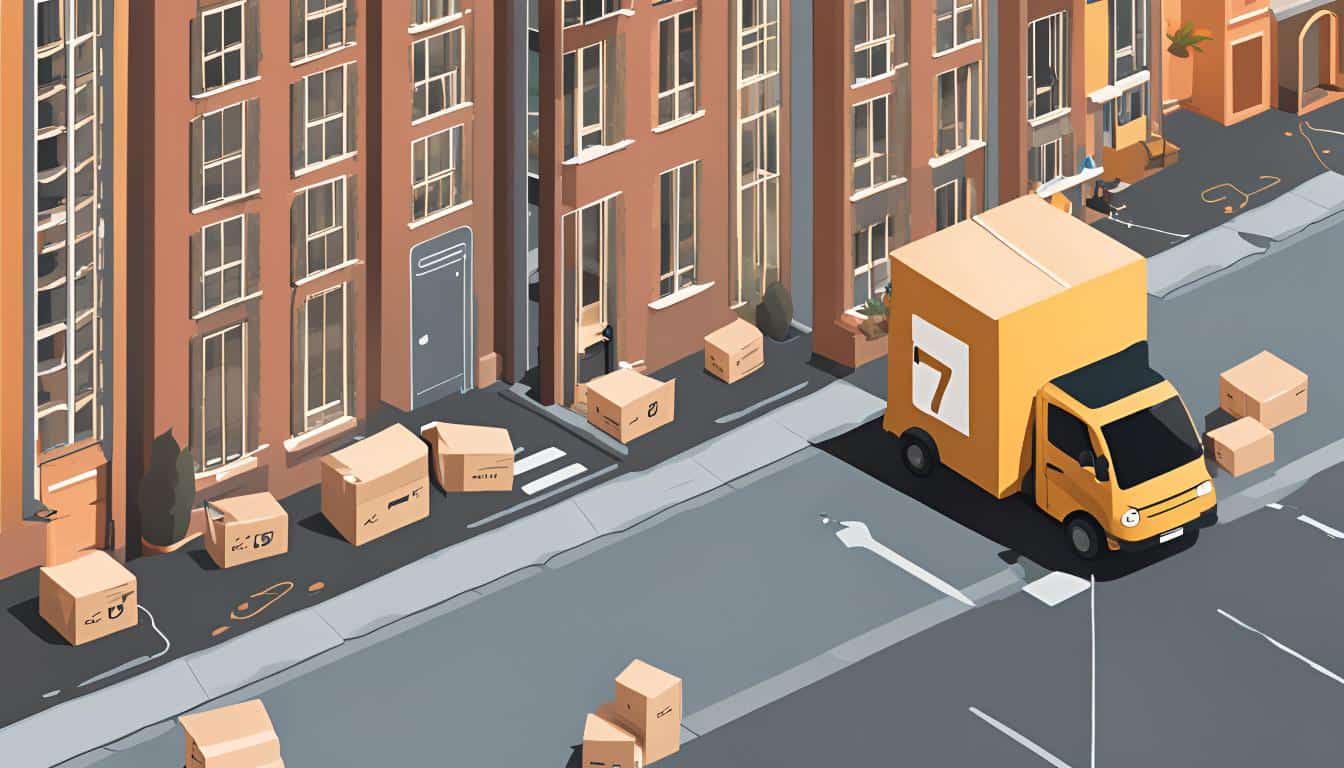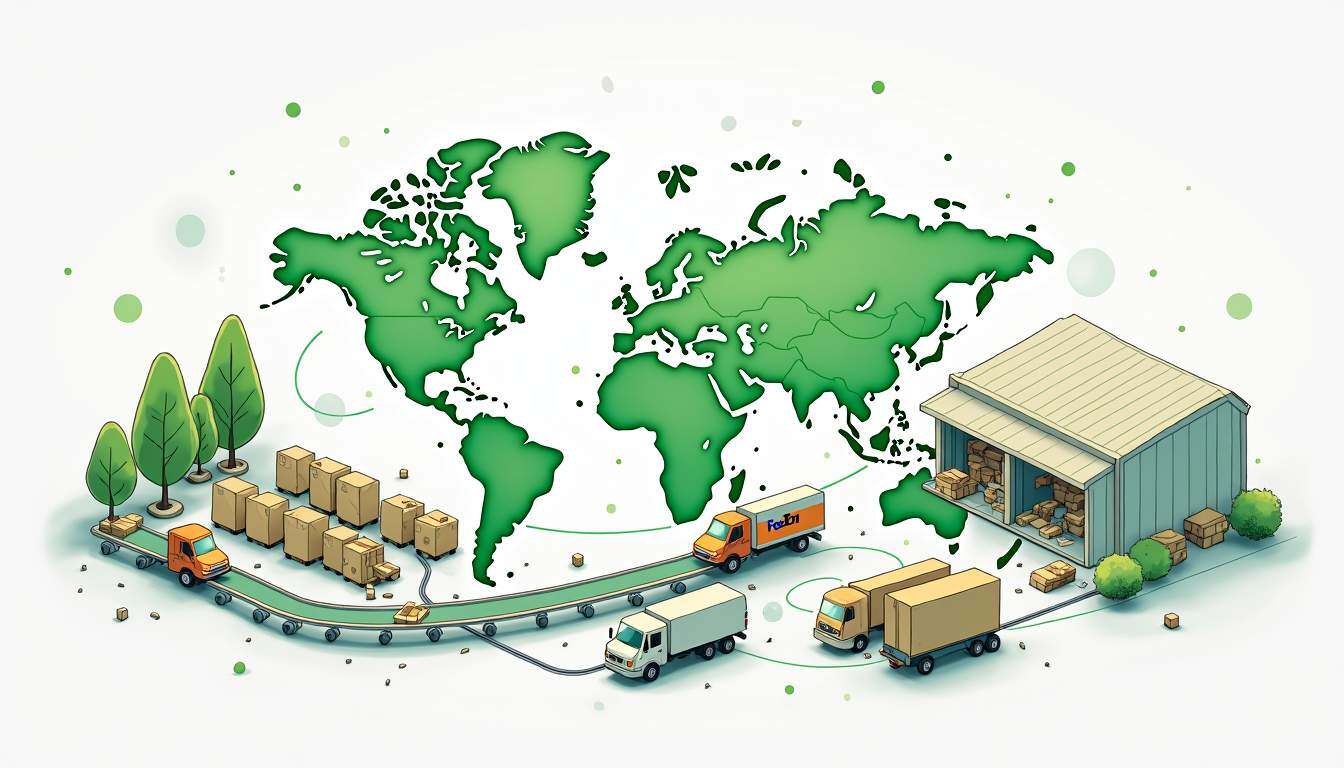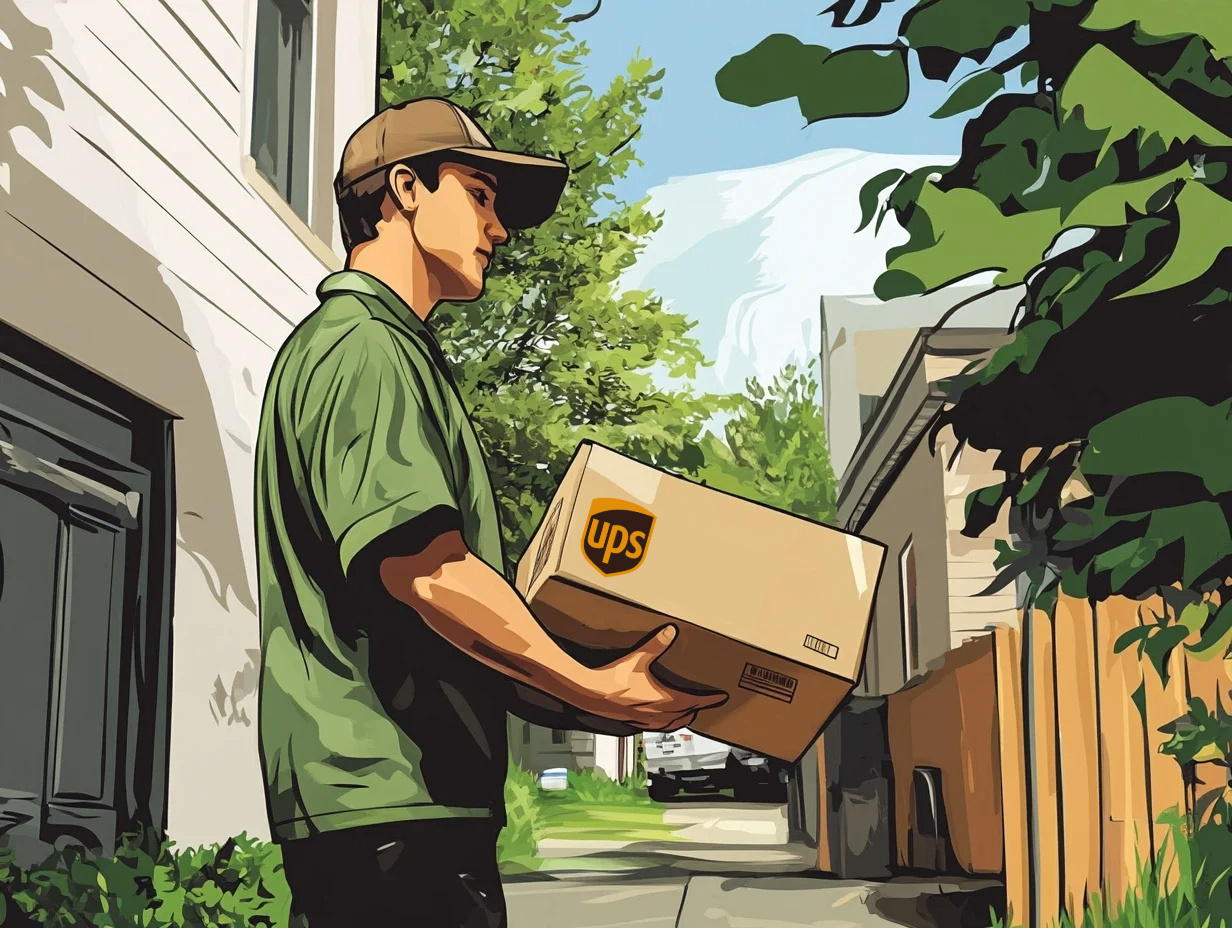Share this
Is Seven-Day Delivery Adoption Here to Stay?
by Shipfusion Team on Nov. 13, 2024

The shift toward seven-day delivery has become a defining trend in ecommerce, meeting the needs of a customer base that values speed and convenience more than ever. This demand has created a dynamic shift in fulfillment strategies for ecommerce brands, pushing businesses of all sizes to consider new operational models to stay competitive.
The decision to offer seven-day delivery can feel daunting, particularly for small-to-medium-sized brands, but understanding the landscape, benefits, and challenges involved can clarify if and how to embrace this trend. Let’s unpack it together.
The Current Landscape of Seven-Day Delivery
Over the past decade, ecommerce has transformed traditional shopping habits. Fast delivery, once a perk, is now an expectation, and offering a seven-day delivery window is part of the new normal. The concept of "shopping anytime, receiving anytime" has caught on, fueled by ecommerce giants like Amazon and Walmart.
Customer expectations have evolved along with these advancements. Delivery speed and reliability have become key differentiators, making it clear that customers prioritize quick access to their purchases. In many cases, the convenience of weekend deliveries can be a deciding factor in completing a sale. In today’s competitive landscape, brands willing to adapt to this model may secure a stronger customer base by meeting these heightened expectations.
Factors Driving the Adoption of Seven-Day Delivery
The modern consumer expects more than just high-quality products – they want those products quickly. This shift is driven in part by the rise of subscription services and two-day shipping, which have set a new standard for fast fulfillment. As consumers grow accustomed to receiving packages within days, waiting through weekends for deliveries becomes increasingly unacceptable. Brands that cater to this demand can benefit from increased customer satisfaction and potentially higher retention rates.
Technological Advancements: Automation, AI, and Fulfillment Efficiency
Automation and artificial intelligence (AI) are at the heart of faster and more efficient fulfillment models. Technologies like automated sorting and predictive analytics for inventory forecasting have enabled warehouses to operate seven days a week with precision. AI-driven systems can anticipate customer demand and help allocate inventory to the right warehouses, shortening delivery times even over weekends.
Companies with proprietary software, like Shipfusion, can leverage real-time reporting to streamline operations and reduce the risk of errors in weekend fulfillment.
Competitive Pressures: Keeping Up with Major Players
Big-name ecommerce giants have been instrumental in shaping customer expectations, setting a high bar with services that extend well into weekends. For smaller ecommerce brands, offering seven-day delivery can level the playing field, giving them a fighting chance against industry giants. Without the same resources as Amazon or Walmart, small-to-medium-sized businesses may find the seven-day model a valuable differentiator, keeping them relevant in a fast-evolving market.
Pros and Cons of Seven-Day Delivery for Ecommerce
While seven-day delivery brings clear benefits, it also presents significant challenges that each business must weigh carefully.
Pros
- Higher Customer Satisfaction and Retention: Customers value businesses that prioritize convenience. Offering weekend deliveries enhances the customer experience and can lead to higher retention rates, especially among shoppers who value flexibility in when they receive packages.
- Competitive Advantage: With only a portion of ecommerce brands able to meet the logistical demands of seven-day delivery, those that do gain a unique edge. Even small companies can appeal to a broader audience by catering to the "anytime shopping" mentality.
Cons
- Increased Operational Costs: Offering deliveries every day of the week often requires investing in additional resources, from staffing to warehousing capacity. Partnering with a third-party logistics (3PL) provider can offset some of these costs, but businesses still need to be prepared for a rise in operational expenses.
- Logistical Complexities: Managing a seven-day delivery schedule requires precise coordination. Supply chain disruptions, fluctuating demand, and inventory management become more challenging as businesses strive to maintain a seamless flow of products. Enhanced visibility tools and software for real-time adjustments are crucial to avoid issues.
Is Seven-Day Shipping Worth It for Small-to-Medium Ecommerce Brands?
For small-to-medium-sized ecommerce brands, the decision to offer seven-day delivery isn’t straightforward. The costs, resources, and logistics must be carefully weighed against the potential customer satisfaction and market advantages.
For instance, brands in niches like fashion or cosmetic products, where customer expectations for rapid fulfillment are higher, may see a greater return on investment from seven-day delivery. However, for brands in categories with less urgency – such as specialty items or high-end goods – a slower delivery schedule may suffice.
Some small businesses have navigated the challenges of seven-day delivery successfully by partnering with 3PL providers that offer robust technology and logistics solutions. With over a million square feet of warehouse space across North America, companies like Shipfusion can provide tailored fulfillment options, helping smaller brands meet customer demands without bearing the burden of increased overhead alone.
The Future of Seven-Day Delivery
As ecommerce continues to evolve, seven-day delivery is likely to become standard, especially as customer expectations grow and technology advances. In the coming years, the adoption rate of this model is expected to increase, along with the need for advanced warehousing technology and better last-mile delivery solutions.
However, the costs and operational demands of this model may also escalate. Brands looking to adopt seven-day delivery should remain agile, assessing not only their current capacity but also their ability to scale. This may include expanding warehouse capabilities, optimizing inventory management practices, and embracing innovative tech solutions to streamline the logistics involved.
Ultimately, the decision to implement seven-day delivery should align with a brand’s long-term goals. By evaluating factors such as market demand, competitive positioning, and operational resources, ecommerce brands can make informed choices that balance customer satisfaction with cost-efficiency.
Seven-Day Delivery Is Just the Start
Seven-day delivery represents both a challenge and an opportunity for ecommerce businesses. For brands committed to enhancing the customer experience, it offers a way to stand out and retain more customers by catering to their preferences for convenience. However, it’s essential to approach this shift strategically, considering factors like operational costs and logistical complexities.
Shipfusion’s approach to ecommerce fulfillment offers a practical path forward, with tailored seven-day solutions designed to simplify logistics and enhance delivery speed. By leveraging advanced inventory management, real-time tracking, and dedicated account management, Shipfusion empowers brands to provide the convenience customers expect without sacrificing operational efficiency.
Whether your ecommerce brand is ready for seven-day delivery or just exploring the possibilities, the right logistics partner can make all the difference. Contact Shipfusion today to learn more about transforming your fulfillment strategy.
Share this
You May Also Like
These Related Articles

Let’s Talk the Nuances of FedEx Ecommerce Fulfillment

Does UPS Deliver On Sundays?

Shipping Speed Optimization Tips You'll Be Glad You Implemented
- April 2025 (1)
- March 2025 (26)
- February 2025 (26)
- January 2025 (37)
- December 2024 (16)
- November 2024 (23)
- October 2024 (22)
- September 2024 (27)
- August 2024 (9)
- July 2024 (8)
- June 2024 (5)
- May 2024 (8)
- April 2024 (8)
- March 2024 (6)
- February 2024 (6)
- January 2024 (5)
- December 2023 (3)
- November 2023 (3)
- October 2023 (5)
- September 2023 (4)
- August 2023 (2)
- July 2023 (1)
- June 2023 (4)
- March 2023 (2)
- October 2022 (1)
- September 2022 (5)
- August 2022 (4)
- July 2022 (7)
- June 2022 (4)
- May 2022 (4)
- April 2022 (6)
- March 2022 (2)
- February 2022 (1)
- January 2022 (3)
- December 2021 (2)
- November 2021 (4)
- October 2021 (2)
- September 2021 (5)
- August 2021 (4)
- July 2021 (5)
- June 2021 (3)
- May 2021 (2)
- April 2021 (3)
- March 2021 (3)
- February 2021 (3)
- January 2021 (2)
- December 2020 (4)
- November 2020 (2)
- October 2020 (4)
- September 2020 (2)
- July 2020 (5)
- June 2020 (4)
- May 2020 (2)
- April 2020 (2)
- March 2020 (4)
- February 2020 (1)
- December 2019 (1)
- May 2018 (1)
- March 2018 (2)
- February 2018 (3)
- January 2018 (3)
- November 2017 (3)
- July 2017 (4)
- March 2017 (3)
- February 2017 (5)
- January 2017 (3)
- December 2016 (4)
- November 2016 (6)
- October 2016 (6)
- October 2015 (1)
- September 2015 (1)
- June 2015 (3)
- May 2015 (3)
- August 2014 (1)
- July 2014 (1)
- March 2014 (1)
- February 2014 (1)